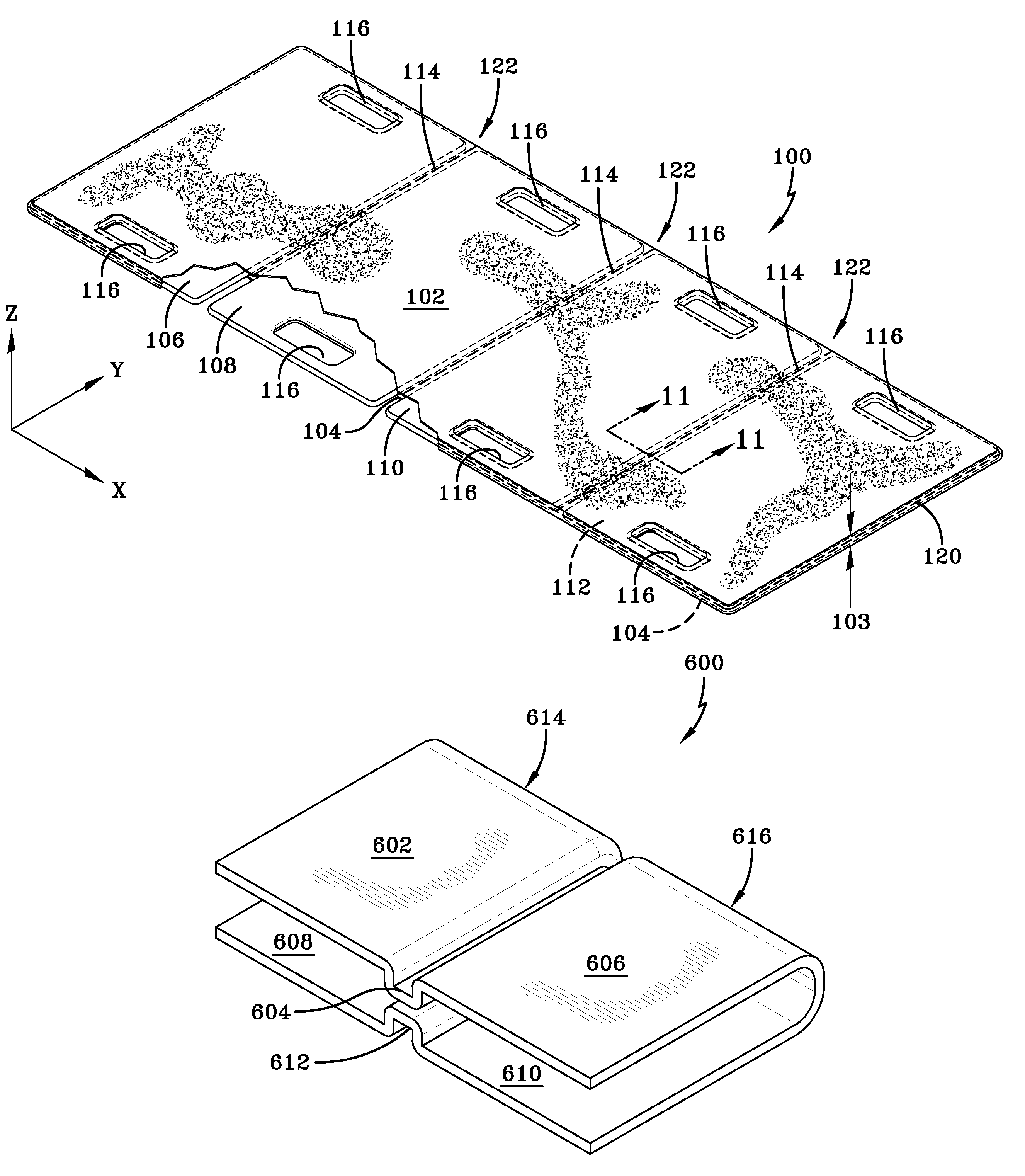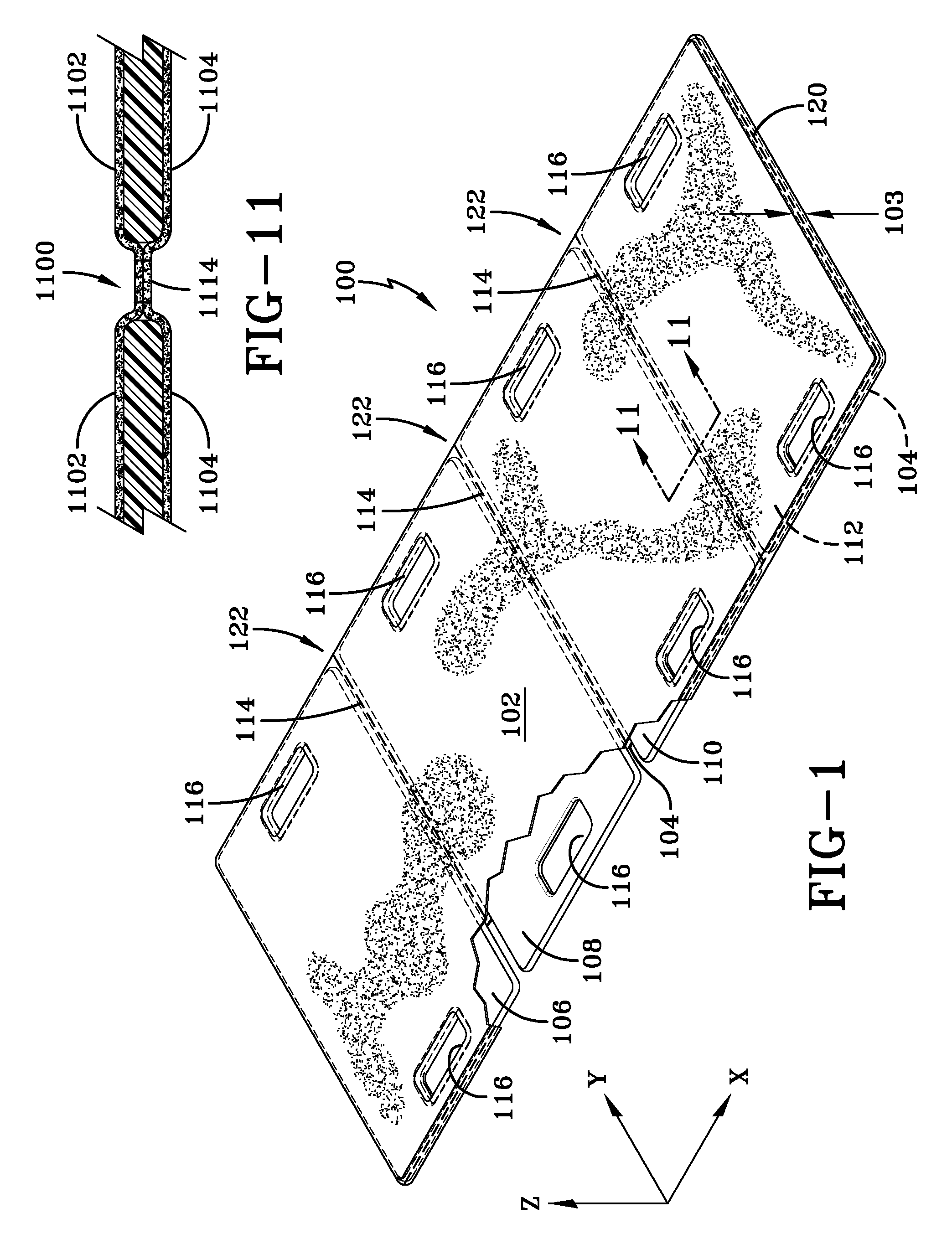Folding apparatus for transferring a patient
a patient and multi-panel technology, applied in the direction of sleeping rug, transportation and packaging, socks, etc., can solve the problems of insufficient caregiver personnel, limited staff in the facility, and the difficulty of transferring patients between beds and other surfaces, so as to reduce hospital waste and increase cleanliness and organization
- Summary
- Abstract
- Description
- Claims
- Application Information
AI Technical Summary
Benefits of technology
Problems solved by technology
Method used
Image
Examples
embodiment 100
[0059]The patient transfer apparatus 100 may be manufactured in parts for later combination. Each of the rigid inserts 106, 108, 110 and 112 for example may be cut individually from a piece of stock material into the proper size. The rigid inserts 106,108 may then be positioned on top of the bottom layer 104 after an adhesive is optionally placed on each side of the rigid inserts 106, 108, 110 and 112. The material top layer 102 and bottom layer 104 can be joined together at an outside edge of the inserts 106, 110 that are furthest apart with widthwise perimeter seams 120 and the inserts can be captured in the direction of the y axis with lengthwise perimeter seams 122. The hand hold openings 116 can be manufactured utilizing techniques known by one of skill in the art. The hand hold openings 116 can be cut or die stamped, for example through the inserts 106, 108,110 and 112 and layers 102 and 104 cut out and sealed utilizing techniques mentioned previously. In this embodiment 100, ...
embodiment 400
[0068]Next, a plurality of patient straps 422 may extend from the sides of the patient transfer apparatus 400 in a similar manner to the pull strap 418 and the storage straps 420. The patient straps may attach to or extend from any position along the perimeter of the patient transfer apparatus 400 such as extending from a hinge 414 or from the corners for example. The patient straps 422 may be used to secure a patient to the patient transfer apparatus 400 in a horizontal or crisscross fashion. However, the patient straps 422 may also be completely detachable from the patient transfer apparatus 400 so as to not interfere with the ability slide a patient between surfaces. For example, the patient straps 422 may attach to a plurality of handhold openings 416 by using devices comprising clips or by allowing the patient strap 422 to loop through themselves after penetrating the handhold openings 416. The embodiment 400 illustrates four straps; however two, three or more than four straps ...
PUM
 Login to View More
Login to View More Abstract
Description
Claims
Application Information
 Login to View More
Login to View More - R&D Engineer
- R&D Manager
- IP Professional
- Industry Leading Data Capabilities
- Powerful AI technology
- Patent DNA Extraction
Browse by: Latest US Patents, China's latest patents, Technical Efficacy Thesaurus, Application Domain, Technology Topic, Popular Technical Reports.
© 2024 PatSnap. All rights reserved.Legal|Privacy policy|Modern Slavery Act Transparency Statement|Sitemap|About US| Contact US: help@patsnap.com










